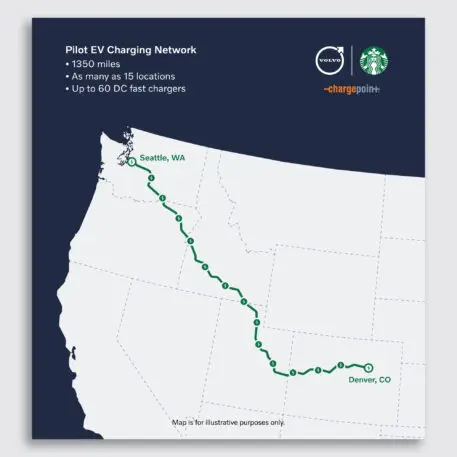By 2030, there could be 26 million electric cars in the U.S., which means we’ll need more than 10 times as many EV chargers. Starbucks, with its 15,000 locations across the country, thinks that it could help fill part of the gap.
In a pilot this year, the company is partnering with Volvo and Chargepoint to install EV chargers in its parking lots along a 1,350-mile route from Denver to Seattle, with stops available roughly every 100 miles. “It’s one of those charging deserts, so to speak,” says Michael Kobori, chief sustainability officer at Starbucks. “There aren’t too many charging stations available there.”

“This is pairing the idea of electric vehicle charging with the fact that, hey, if you’re on a trip, you’re gonna stop in in the morning anyway to get your Starbucks, to get your beverage, to get your breakfast,” Kobori says. “And as you’re sitting there, getting ready for the day and planning out your route and checking out, your car is just charging.” While charging times vary depending on the vehicle, Volvo says its electric cars can go from a 20% charge to 90% in 40 minutes.
Volvo and Chargepoint will handle the installation at Starbucks stores in towns like Twin Falls, Idaho, and Uintah, Utah, navigating the fairly involved process of working with local utilities to set up new electrical service. In many areas, the chargers will also help fill a gap for local residents, not just travelers. “This route goes through several of what are literally federal opportunity zones, economically distressed communities,” he says. “And so we were also thinking as we looked at this, how do we make sure to bring the charging to those underserved markets so that will open them up as well to electric vehicles.”
In the pilot, Starbucks will test usage rates and decide whether it wants to expand the service nationally as part of its larger sustainability plan, which is aiming to eventually make the company “resource positive,” including a goal to capture more carbon than it emits.
Recognize your brand’s excellence by applying to this year’s Brands That Matter Awards before the early-rate deadline, May 3.
